Albert Mullins: Baggage discovered 100yrs after tragic Shipwreck

An article by David Saint-Pierre and Brian Cleary.
When diver Mark Reynolds got his hands on the leather suitcase he had just found, around 90 feet below the surface of the cold St. Lawrence River on this afternoon of 1986, he couldn’t know that he was actually making a significant discovery. There, in the heart of the wreck of the Empress of Ireland , sifting through mud and debris in the First Class baggage room, Reynolds found, inside a disintegrating travel bag, two wooden objects, one intricate bowl and scraps of newspaper and some other delicate paper fragments. On a second dive, in the same spot, he found more of the same bowls and other oriental objects, including a miniature wooden pagoda. Objects, that after a 2023 conversation between Mr Saint-Pierre and Barnes & Mullins, would turn out to have belonged to Albert Mullins, co-founder of British Musical Instrument distribution company, Barnes & Mullins.
|
|
The RMS Empress of Ireland was a 14 200-ton ocean liner of 570 feet long. Built in Glasgow in 1906, she belonged to the Canadian Pacific Railway company and plied the Liverpool to Quebec City run, and was – along with sister ship Empress of Britain – the pride of the CPR’s fleet on the North Atlantic.
In the early morning hours of May 29 1914, just a few hours after leaving Quebec with 1477 people on board, she was rammed on the starboard side in a dense fog by the Norwegian collier SS Storstad . Mortally damaged, she took on water at a tremendous rate, started listing very quickly, rolled over on her starboard side and sank in only 14 minutes. Just a few lifeboats could be launched, and the vast majority of passengers did not even have time to get out on deck. 1012 people died in the frigid St. Lawrence waters, the worst maritime disaster in Canadian history. Since crew members were familiar with evacuation procedures and the layout of the ship, most of them survived. On the contrary, paying passengers didn’t fare as well, and more passengers died on the Empress of Ireland than on the Titanic, two years earlier.
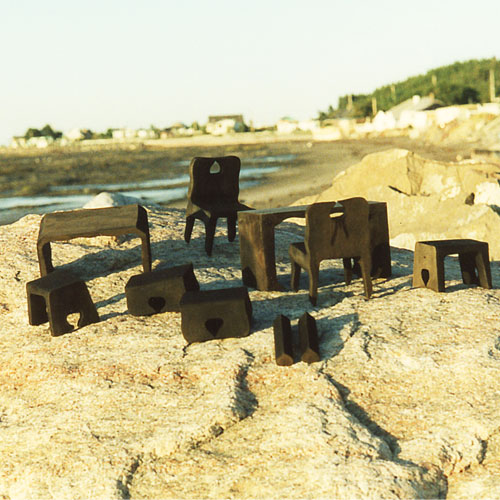 |
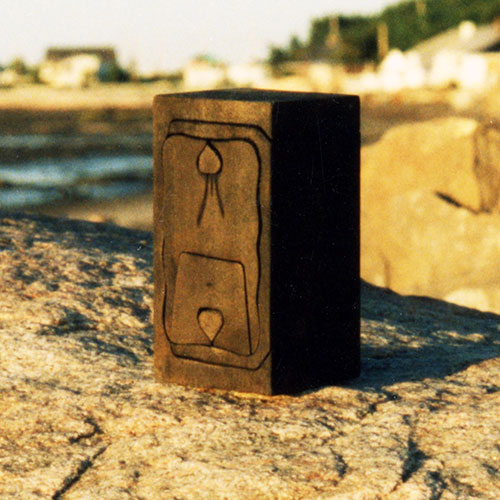 |
Before 1999, the year the Canadian government made the wreck a protected national historical site, the Empress of Ireland had been for three decades since its rediscovery by salvage divers in 1964, the playground for experienced divers who could legally recover artefacts. And the Empress, being a large ocean liner of the Edwardian era, and lying in only 140 feet of water, had a lot to give to souvenir hunters. But very rarely can items recovered from the wreck be traced back to their original owners.
What Reynolds found in 1986 might be one of those rare cases. Among the items from that suitcase, the small paper fragments that seem to have formed part of a notepad were the key. Reynolds says he had tried to identify the original owner of the items, but abandoned after the contacts he had originally tried did not lead to a response. The items finally changed hands, making their way to Guy D’Astous, an avid Canadian Empress of Ireland collector and enthusiast. It is there that the co-author of these lines, David Saint-Pierre, noticed the handwritten notes and made the connection with one specific passenger of the Empress.
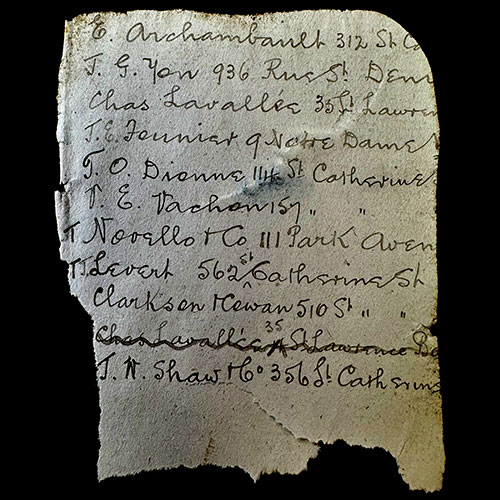 |
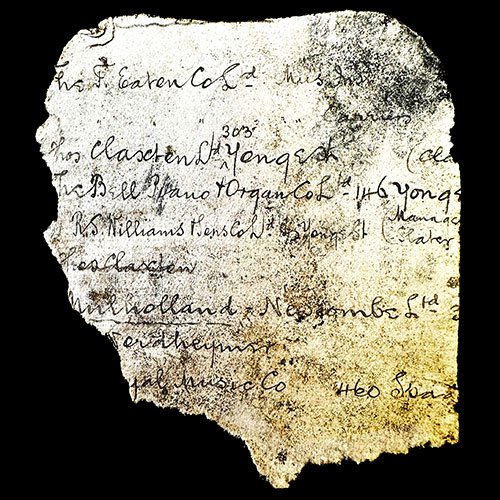 |
When Saint-Pierre looked at the first handwritten piece of paper, the line at the very top stood out: “E. Archambault, 312 St. Ca…”. This was the famous Edmond Archambault store on Sainte-Catherine street in Montreal, the first location of what is still in 2023, a chain of stores that sell, among other things, musical instruments. Then the handwritten notes go on: “Chas Lavallée, 35 St. Laurent”, on another page “The Bell Piano + Organ Co Ltd. 146 Yong s.”. Some of the names on the list did not immediately ring a bell, so Francis Lapointe, a historian specializing in the history of luthiers and musical instruments dealers in Montreal, was consulted. He recognized almost all of the names on the list right away and confirmed that the fragments mainly constitute a handwritten list of music stores and instrument makers in Canada, especially in Montreal and Toronto.
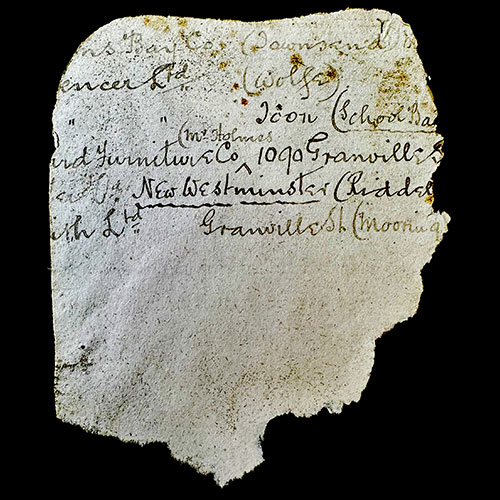 |
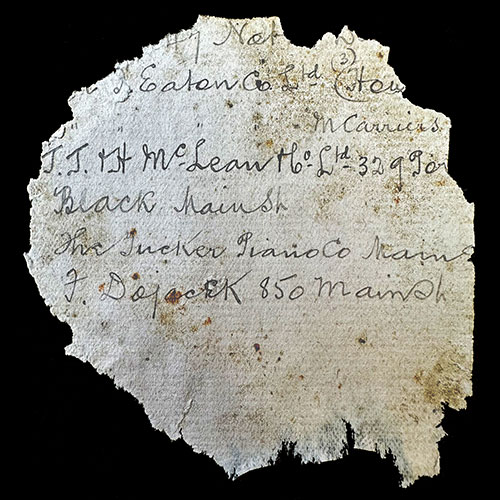 |
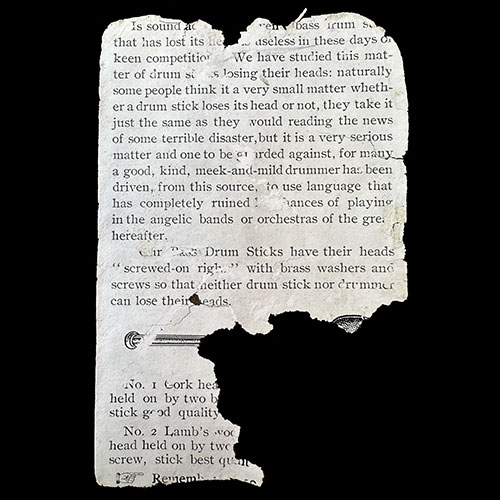 |
Only one passenger could logically have carried this on board the doomed liner: First Class passenger Albert Mullins! In late 2023, a further step was taken to confirm this connection when David Saint-Pierre reached out to Barnes & Mullins in the UK to see wether any samples of Albert Mullins' handwriting were available. As luck would have it, of the small amount of B&M company history from that period, one particular item offered exactly what was required: A portrait photograph of Mr Mullins with a personal message written by his own hand. The handwriting was a match, and that's when the Eureka moment occurred. Finally the luggage could be identified!
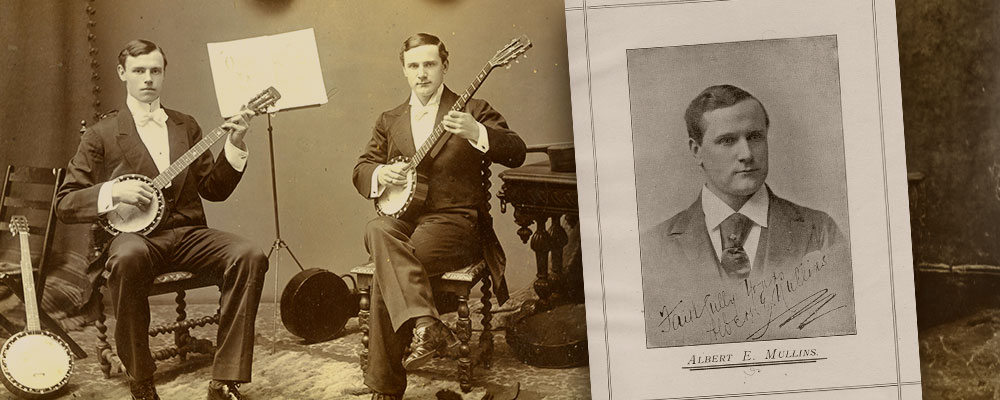 |
Mullins was travelling with his wife Kate and daughter Eileen. Their son Richard (Dick) remained at home and in school looked after by the Barnes family. Barnes and Mullins were the greatest of friends and brothers-in-law. The family travelled from London to South Africa, where they spent a month before moving on to Australia. It is believed the family stayed with Albert Mullins’ brother for some of the time as he had emigrated to Australia a couple of years earlier. The success of this business trip is still evident today, with Barnes & Mullins Ltd receiving regular requests to value old B&M banjos in Australia and other British Commonwealth countries.
Unfortunately, we only have details of their trip gleaned from passenger records, but we know the next stop after Australia was Canada, arriving in Victoria on the 5 th March 1914. We believe the family crossed the entire country as Albert approached potential customers with Barnes & Mullins musical instruments.
Along with his handwritten notes, fragments of newspapers and a page from a promotional document for drumsticks were found. Furthermore, Mullins was apparently bringing back to England a few souvenirs he had acquired during the almost two years the family spent abroad: a set of intricately chiselled offering bowls with a “sayagata” pattern design which most probably came from China.
 |
The other items have a more intriguing origin but all seem to be from the far east. One of them is a miniature dining set made of teak wood, that can be assembled to form a rectangular box. This very delicate object could be a toy or a puzzle that belonged to Eileen, who unfortunately also perished in the disaster at the tender age of just 10. The other item is a pair of candleholders that are also made of wood and can be disassembled to fit in a round box, typical of candleholders used in Buddhist home shrines. Finally, a miniature pagoda and temple were also found in the same spot on a second dive. A bit of mystery remains as to the exact origins of these items carried by Albert on board the Empress of Ireland. Of the almost two years he, Kate and Eileen were away from England, from July 1912 to May 1914, there is a large gap in their whereabouts and apart from Australia and South Africa, it cannot be established with certainty what other places they could have visited. Did they actually visit Japan, or China or purchased these items while in Australia? It is hard to say with certainty.
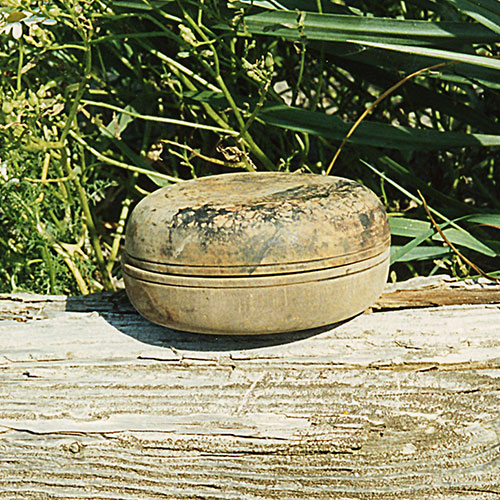 |
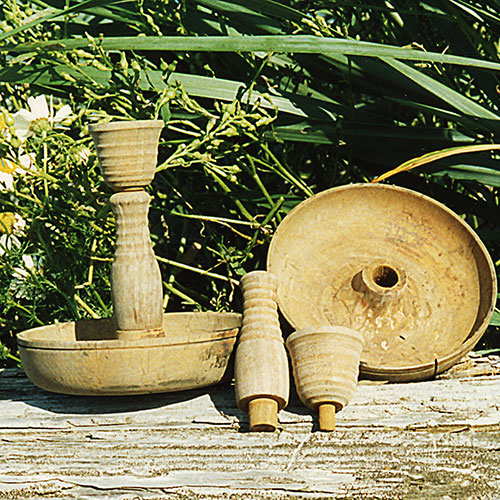 |
Kate survived the Empress of Ireland disaster with two broken legs and passed away in 1964, and her son Dick in 1985. Today, the Barnes & Mullins company continue to thrive and are thrilled to learn more about one of their founders. If company records ever existed, they have been lost many, many years ago and this glimpse into the very early part of the company history is very exciting for Brian Cleary, the current owner and managing director of the Barnes & Mullins company. As we prepare to mark the 110th anniversary of the sinking of the Empress of Ireland, the identification of these objects and their confirmed connection to one of the passengers serve as a poignant testimony of the lives that were lost, interrupted in their prime, and those of the survivors that were changed forever.
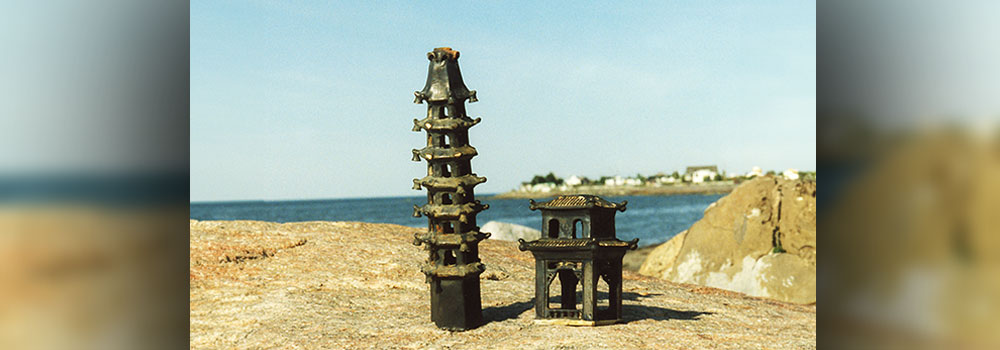 |
Special ceremonies will be held in Rimouski, Quebec, Canada, near the wrecksite, to mark the 110th anniversary. They will be organized by the Site Historique maritime de Pointe-au-Père, which includes the Empress of Ireland permanent museum.
__
The authors would like to thank Mark Reynolds, Guy D’Astous and Francis Lapointe for their generous help with this piece. Also, the Société d’histoire du Bas-Canada contributed to this story by giving access to its extensive documentation collection relating to the Empress of Ireland.
References:
- Brian Cleary is the owner and Managing Director of Barnes & Mullins Ltd, one of the largest and oldest musical instrument distributors in the UK. Established in 1895, Barnes & Mullins are proud to supply many leading brands around the World.
- David Saint-Pierre is a historian and author, based in Montreal, Canada. He published two books on the history of the Empress of Ireland and is a member of the board of directors of the Site Historique maritime de Pointe-au-Père, the historical site that includes the Empress of Ireland permanent museum.


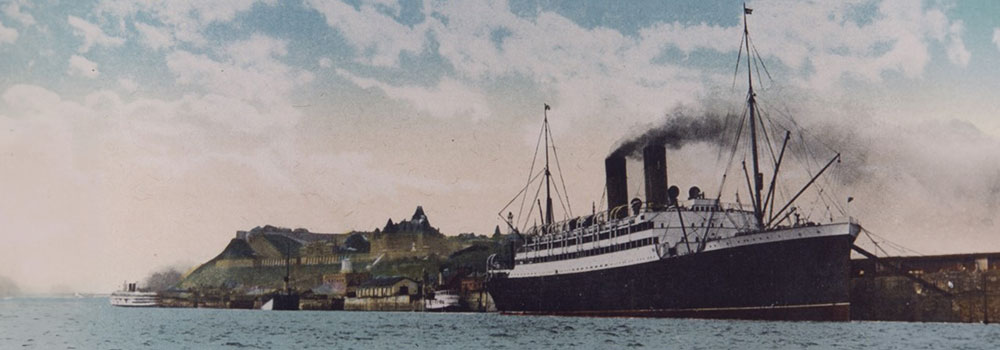

.jpg)

